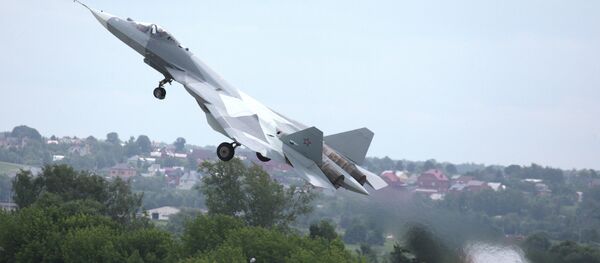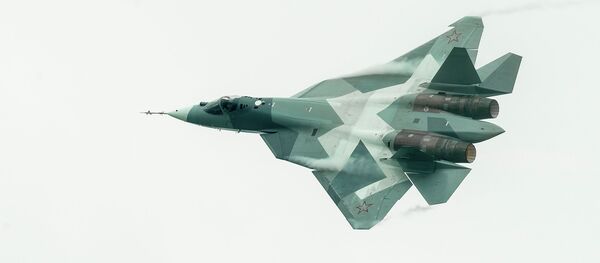The suit was specially designed to make the pilot feel comfortable during supersonic-speed flights. It is equipped with an anti-G system which features a hose for delivering air to the pilot.
The gear also features pockets for flight documents. In the abdominal area there is a metal plate which presses against the pilot’s body to maintain blood flow to the head.
The costume was developed and is being currently tested by Zvezda R&D center in the city of Tomilino, near Moscow.
In addition, the facility is also testing a pilot’s helmet, the most technically advanced part of the gear.
Produced of composite materials like the PAK FA aircraft itself, the helmet is extremely light and can withstand overloads during an ejection escape at speeds of over 1000 kmh.
The all-digital helmet is connected to all PAK FA’s on-board photo and video cameras and transmits all data to its visor. As a result, all actual flight information is always before the eyes of the pilot.
"When the pilot’s head moves the image [on the helmet display] changes respectively. What is more, the system is capable to detect the pupil’s movements for automatic targeting," one the developers told the TV channel Zvezda.
In addition, a new survival kit has been developed for the PAK FA pilots.
If the pilot has to eject and land in an unknown area this kit is his only chance to survive.
The survival pack contains a pan, antenna, signal mirror, 16 cubes of sugar, first aid kit, two match boxes, a signal pistol with charges, 1.5-liter bottle of water, machete knife, radio beacon, and portable radio.
The PAK FA is a single-seat, twin-engine jet fighter, and the first operational aircraft in Russian service to use stealth technology. It was designed by the Sukhoi Design Bureau. The aircraft will be used to achieve air superiority and assist in ground attacks.
Besides its ability to fly at speeds well above Mach 2, the T-50 boasts other, even more important, features such as invisibility to radar and powerful weapons which will be unveiled later.
In December 2014, Russia’s United Aircraft Corporation announced that production of the fighter was ready to begin in 2016. Fifty-five PAK FA jets will enter service in the Russian Air Force by 2020.




